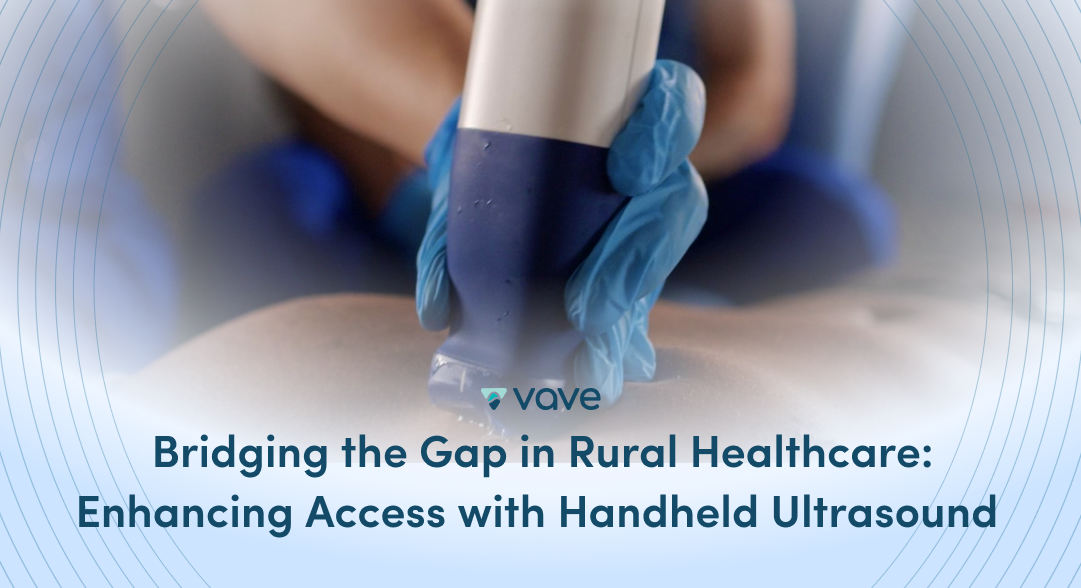The U.S. healthcare system has long struggled with a divide between urban and rural communities. Rural areas often have fewer accessible hospitals, longer commuting times, and limited technology – all factors that contribute to lower care quality and poorer patient outcomes. However, point-of-care ultrasound (POCUS) can help bridge these gaps – and this article explores how POCUS can improve healthcare delivery in rural settings
Rural Regions Miss Out on Routine Imaging
The gap between rural and urban healthcare has created major discrepancies in the use of imaging technology – tools that are vital for screening and diagnostics, as well as supporting ongoing care. There are two primary factors that drive this divide:
1. Limited access to routine imaging: Rural areas have significantly fewer medical imaging facilities per capita compared to urban areas. For example, only 22.2% of rural patients were within a 30-minute drive from a lung cancer screening center - compared to 83.2% of urban patients.1
2. High demand for imaging within rural communities: Non-metropolitan residents represent a disproportionately high 23% of the screening-eligible population despite accounting for only 15% of the U.S.2
These two factors combine to leave rural patients suffering from:
- Excessive travel times and high care costs3
- Long wait times and delayed diagnoses4
- Underutilization of key preventative healthcare5
Efforts to expand access to rural locations have often focused on mobile imaging units – transportation vehicles like trucks or vans equipped with X-rays and CT scans. However, these tend to encounter significant problems, from the initial investment required to purchase vehicles to high ongoing staffing and training costs, as well as vehicle maintenance expenses.6
This is why a growing consensus has emerged that flexible, dynamic technology like POCUS is better suited to tackle care inequality and deliver vital screening to rural locations.
How Point-of-Care Ultrasound (POCUS) Bridges the Gap
Point-of-care ultrasound (POCUS) enables physicians to conduct precise, precise medical imaging regardless of the patient’s location. The technology offers several key advantages for rural physicians:
- Reduced Logistical Challenges: The ease and speed of conducting ultrasound scans at the bedside with a handheld device means POCUS can be integrated into a standard healthcare appointment, even during home visits. Physicians can view scans on their smartphone or tablet and quickly make diagnostic or care management decisions. This means patients no longer need to coordinate time off work, arrange childcare, or incur steep travel costs to receive care or undergo screening.
- Avoided Unnecessary Procedures: Ultrasound images can accelerate diagnostics and rule out specific conditions, often helping to avoid other more expensive and invasive imaging such as CT scans. Physicians can quickly identify key biomarkers, arrange follow-ups when necessary, and tailor care plans more accurately to rural patients.
- Lowered Rural Care Costs: Studies have shown that POCUS significantly reduces the overall cost and duration of imaging exams for rural patients.7 There are also significantly shorter wait times with POCUS, which is likely to lead to increased uptake amongst rural patients.
This helps explain the growing excitement around the technology, with 80% of physicians stating that POCUS is essential for rural care.8 The only problem is many rural physicians still struggle to integrate POCUS devices. In fact, just 38.84% of rural counties have access to the technology, compared with nearly 90% of metropolitan counties.9
Integrating Handheld Ultrasound Without Friction
The relatively low adoption of POCUS within rural healthcare can be explained by two key factors:
- Device Costs: The upfront investment required to purchase POCUS devices can appear steep, especially when you factor in auxiliary costs such as physician training and the subscription fees that many device providers charge. While the technology more than pays for itself in the long run due to relatively high per-scan margins, these financial barriers may give physicians pause.
- Training Gaps: The speed and flexibility of POCUS scans require physicians to develop strong image acquisition and interpretation skills – but many rural physicians still lack experience with the technology. These skills shortages are lessening over time as more undergraduate and residency programs make POCUS training mandatory, but it still means many rural physicians will need extra training to bill for POCUS scans.
But these are both addressable with the right partner – and that is why Vave Health exists. We produced the world’s first wireless, handheld, whole-body ultrasound with a single PZT transducer for rapid, reliable diagnostics. It makes POCUS simple, portable, and affordable for rural physicians, empowering you to:
- Avoid subscription fees and hidden costs to make budgeting easier
- Easy sharing, documents and collaborating of images
This helps accelerate POCUS integration across numerous disciplines and expand access to high-quality imaging across rural communities.
Want to see it in action?
Book a Demo













.webp)
.svg)
.webp)
.svg)





.svg)

.svg)
.svg)
